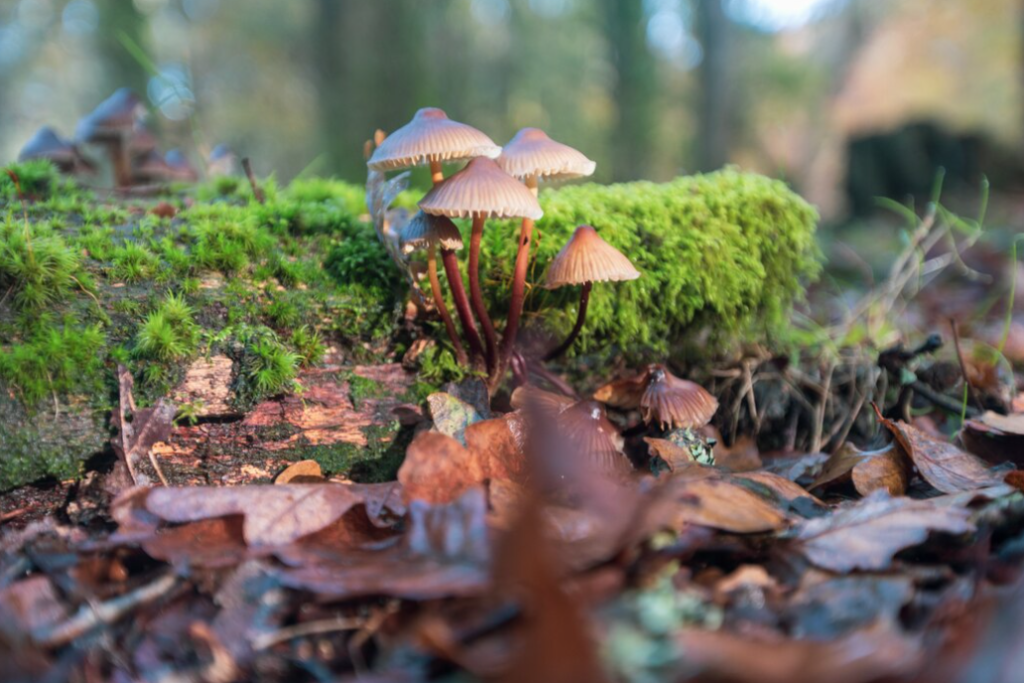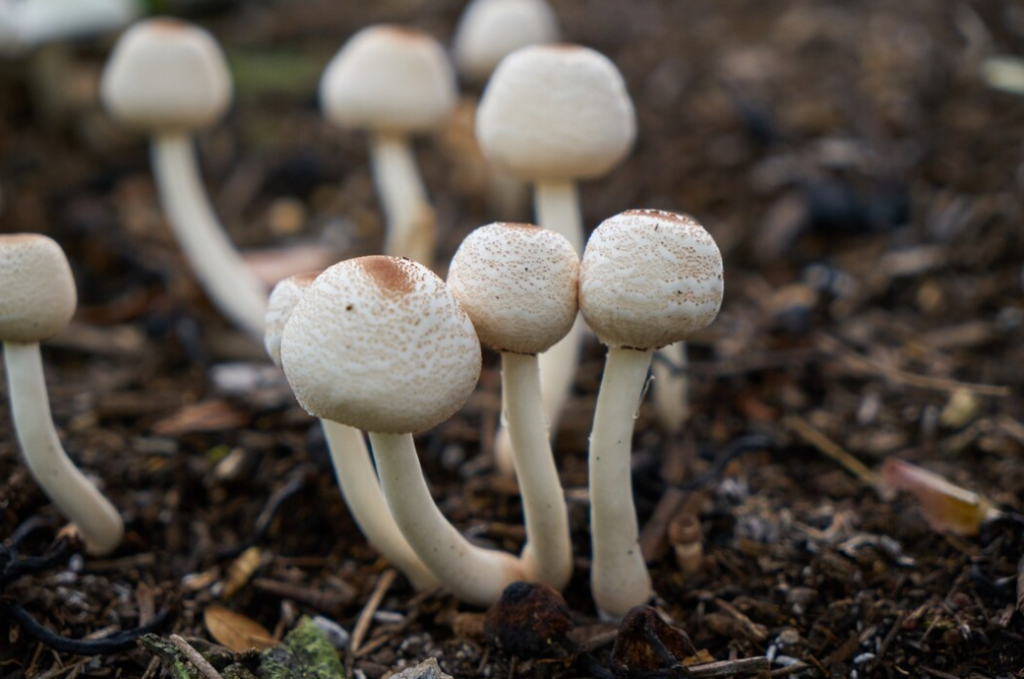The mysterious and often overlooked world of fungi has been an integral part of Earth’s ecosystem for millions of years. Acting as nature’s primary decomposers, fungi play an essential role in nutrient cycling. But beyond their ecological significance, the history of fungi intertwines with human civilization in fascinating ways.
Ancient Fungi: Prehistoric Times
Fungi, thought to have emerged on our planet approximately one billion years ago, stand as enduring witnesses to the Earth’s deep history. The most ancient traces of fungi, found in the fossil record, harken back some 600 million years, offering us a fascinating glimpse into their early existence and evolution.
These primordial fungi played an essential role in shaping the Earth’s ecosystems, serving as pioneers for complex terrestrial life. Through the establishment of symbiotic relationships with the emerging plant life of their time, they laid the foundation for the development of lush and diverse environments. Notably, mycorrhizal fungi emerged as key players in this ancient ecological drama, assisting plants in their pioneering journey onto the land. By facilitating nutrient uptake for these early plants, mycorrhizal fungi provided vital support, fostering the colonization of the barren terrestrial landscape and enabling the remarkable transformation of our planet. The history of these ancient fungi is a testament to the interconnectedness of life and the enduring impact of these humble organisms on the world as we know it today.
Fungi in Ancient Civilizations
Throughout the annals of history, diverse cultures across the globe have shown a remarkable understanding of fungi’s significance, both in terms of their potential benefits and inherent risks. These ancient civilizations left behind a vivid mosaic of insights into humanity’s relationship with fungi:
- Ancient Egypt: Within the enigmatic hieroglyphics of ancient Egypt, tantalizing glimpses of fungi’s role in society emerge. While deciphering these symbols, researchers have uncovered evidence of the Egyptians employing fungi for medicinal purposes, offering intriguing clues to their early pharmacological knowledge. Some even speculate that specific mushrooms might have found their way into religious rituals, thanks to their potential hallucinogenic properties, adding an extra layer of mystique to the ancient Egyptian civilization;
- China and Asia: The tapestry of traditional Chinese medicine is intricately woven with fungi, a practice that has endured for millennia. Among the most revered fungi in this tradition is the ‘Lingzhi’ mushroom, known scientifically as Ganoderma lucidum. Ancient Chinese wisdom held that this mushroom possessed life-extending properties, elevating it to the status of a precious elixir. Across Asia, similar traditions blossomed, with different cultures incorporating various fungi into their medicinal and culinary practices, recognizing their multifaceted potential;
- Ancient Greece and Rome: The civilizations of ancient Greece and Rome displayed a clear demarcation between edible and poisonous mushrooms, showcasing an early grasp of fungal taxonomy. These ancient societies, known for their intellectual prowess, even left written records alluding to the use of fungi. The renowned philosopher Plato, in his writings, hinted at the presence and potential applications of fungi, providing glimpses into their role in these classical civilizations.

The Renaissance and Beyond: Fungi in Modern Science
The Renaissance, a period of remarkable intellectual and artistic flourishing, also sparked a rekindled fascination with the natural world, and within that renaissance, fungi found their place in the scientific spotlight. However, it was the invention of the microscope in the late 16th century that catapulted mycology, the scientific discipline dedicated to the study of fungi, into an entirely new era of discovery and understanding.
Among the luminaries of this time, Antoni van Leeuwenhoek stands tall as the ‘Father of Microbiology.’ With his pioneering work, he became the first to peer into the microscopic world and observe the intricate structure of yeast cells. This groundbreaking revelation laid the foundation for future inquiries into the mysterious realm of fermentation, a process in which fungi played a pivotal role. Leeuwenhoek’s work not only unlocked the secrets of yeast but also opened the door to a broader exploration of the microbial universe, forever altering the course of scientific inquiry.
As the 19th century unfolded, the scientific community witnessed the establishment of numerous mycological societies, each with the mission of advancing the knowledge and understanding of fungi. These societies served as hubs of collaboration and research, facilitating the collective effort to study and classify fungi. The result was the systematic identification and categorization of thousands of fungal species, shedding light on their incredible diversity and ecological significance. This period marked a significant turning point in our comprehension of fungi, as they transitioned from being enigmatic organisms to well-documented constituents of the natural world.
Fungi in Modern Medicine and Industry

Over the past few centuries, fungi have undergone a remarkable transformation, evolving from mere curiosities to become essential cornerstones of various industries, reshaping the way we perceive and utilize these organisms:
- Penicillin: In a scientific milestone that forever altered the course of modern medicine, Alexander Fleming’s discovery of penicillin in 1928 showcased the tremendous potential of fungi in healthcare. This groundbreaking antibiotic, derived from the Penicillium fungus, heralded a new era in medicine, saving countless lives by combating bacterial infections. The impact of penicillin remains immeasurable, as it laid the foundation for the development of a vast array of antibiotics, profoundly impacting human health on a global scale;
- Fermentation: The intricate understanding of fungal fermentation processes has proved fundamental in a wide spectrum of industries. From brewing and winemaking to the production of biofuels, fungi have played a pivotal role in transforming raw materials into valuable products. These fermentation processes, harnessed by industries, have not only satisfied our culinary desires but also powered our vehicles, highlighting the versatility of fungi in driving innovation and economic growth;
- Bioremediation: Certain fungi possess a remarkable ability to break down and metabolize environmental pollutants, offering innovative solutions for the cleanup of contaminated sites. This bioremediation potential has given rise to novel methods for addressing environmental challenges, contributing to the restoration and preservation of ecosystems worldwide. Fungi’s capacity to remediate polluted areas underscores their unique role in safeguarding our planet’s ecological balance;
- Modern Mycology: Today, mycologists are at the forefront of exploring the vast potential of fungi across diverse sectors. From the development of sustainable materials to the discovery of novel medical treatments, the contemporary study of fungi has opened up a world of possibilities. Fungi are being utilized to create eco-friendly packaging materials, as sources of alternative protein, and even as promising candidates for cancer treatments. The ongoing research into fungi continues to uncover their multifaceted contributions to our modern world.
In sum, fungi have experienced a renaissance in recent centuries, emerging as pivotal players in modern medicine and industry. From the life-saving miracle of penicillin to their role in sustainable production processes and environmental cleanup, fungi’s significance in our contemporary world is undeniable. As modern mycology advances, we can only anticipate further groundbreaking discoveries that will continue to redefine our relationship with these remarkable organisms.
Conclusion
The history of fungi is a testament to their resilience, diversity, and indispensability. From the ancient symbiotic relationships formed with early plants to their vital roles in modern medicine and industry, fungi have been and continue to be an integral part of our world. As we delve deeper into the 21st century, the potential applications of fungi promise to be as vast and varied as their history.
As we reflect on the rich history and promising future of fungi and their myriad roles, it’s intriguing to explore our dedicated article on ‘What Are 5 Diseases Caused by Fungi.’

